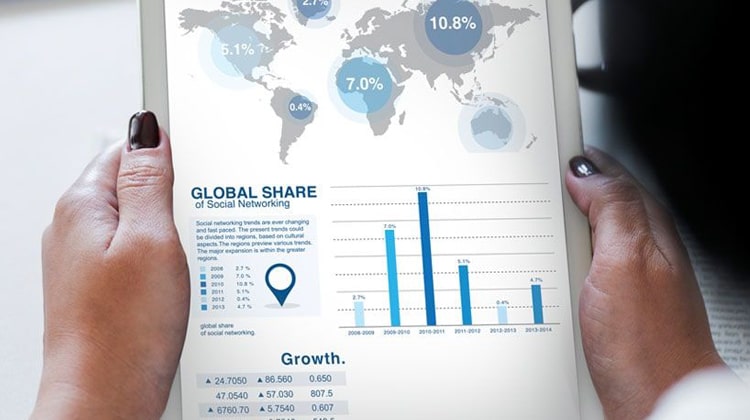The great explorer of the truth, the master-builder of human happiness no one rejects dislikes avoids pleasure itself because it is pleasure but because know who do not those how to pursue pleasures rationally encounter consequences that are extremely painful desires to obtain.
Read More
TERMS AND CONDITIONS
For non-finance professionals, the thought of talking data, forecasts, and valuations can seem daunting. But developing your financial skills so that you have a financial fluency can help you excel is been our most interesting concern and focus, professionally and make a greater impact on your investments.
Understanding the financial implications of your decisions and clearly communicating those decisions to key stakeholders can help advance your investment career experiences. But first, you need to grasp the terminology mostly on cryptocurrency assets. Here are 10 financial terms and definitions you should know.
FINANCE TERMS EVERYONE SHOULD KNOW
1. Amortization: Amortization is a method of spreading an intangible asset's cost over the course of its useful life. Intangible assets are non-physical assets that are essential to a company, such as a trademark, patent, copyright, or franchise agreement.
2. Assets: Assets are items you own that can provide future benefit to your business, such as cash, inventory, real estate,gold,land,agricultural products(food and crops)office equipment, or accounts receivable, which are payments due to a company by its valued investors. There are different types of assets, including:
• Current Assets: Which can be converted to cash within a year such as crypto assets (token projects) this are mainly for short-term investors,that's why our trained and experienced professional trading team are so committed on making out good and sustainable earnings to provide our investors good ROI weekly.
• Fixed Assets: Which can’t immediately be turned into cash, but are tangible items that a company owns and uses to generate long-term income for our long-term investors this items includes real estates,gold, gas and crude oil,Agriculture,offices and equipment, experienced trained and reliable agents,residents.
3. Asset Allocation: Asset allocation refers to how you choose to spread your money across different investment types, also known our investment plans. These include:
• Bonds: Bonds represent a form of borrowing. When you buy a bond, typically from the government or a corporation, you’re essentially lending them money. You receive periodic interest payments and get back the loaned amount at the time of the bond’s maturity—or the defined term at which the bond can be redeemed.
• Stocks: A stock is a share of ownership in a public or private company. Where we ensure your Roi it's highly effective and consistent.
4. Balance Sheet: A balance sheet is an important financial statement that communicates an organization’s worth, or “book value.” The balance sheet includes a tally of the organization’s assets, liabilities, and shareholders’ equity for a given reporting period.
• The Balance Sheet Equation: Balance sheets are arranged according to the following equation: Assets = Liabilities + Owners’ Equity
5. Capital Gain: A capital gain is an increase in the value of an asset or investment above the price you initially paid for it. If you sell the asset for less than the original purchase price, that would be considered a capital loss.
Related: 6 Ways Understanding Finance Can Help You Excel Professionally
6. Capital Market: This is a market where buyers and sellers engage in the trade of financial assets, including stocks and bonds. Capital markets features several participants, including:
• Companies: Firms that sell stocks and bonds to investors
• Institutional investors: Investors who purchase stocks and bonds on behalf of a large capital based on huge return on Investment.
• Mutual funds: A mutual fund is an institutional team e.g (Geneva Finance) that manages the investments of thousands of individuals
• Hedge funds: A hedge fund is another type of institutional enterprise e.g (Geneva Finance)which controls risk through hedging—a process of buying one stock and then shorting a similar stock to make money from the difference in their relative performance
7. Cash Flow: Cash flow refers to the net balance of cash moving in and out of a business at a specific point in time. Cash flow is commonly broken into three categories, including:
• Operating Cash Flow: The net cash generated from normal business operations
• Investing Cash Flow: The net cash generated from investing activities, such as securities and investors investments and the purchase or sale of assets
• Financing Cash Flow: The net cash generated from financing a business, including debt payments, shareholders’ equity, and dividend payments
8. Cash Flow Statement: A cash flow statement is a financial statement prepared to provide a detailed analysis of what happened to our company’s cash during a given period of time. This document shows how the business generated and spent its cash by including an overview of cash flows from operating, investing, and financing activities during the reporting period(this operation are been carried out by our team of financial officers)
9. Compound Interest: This refers to “interest on interest.” Rather, when you’re investing or saving, compound interest is earned on the amount you deposited, plus any interest you’ve accumulated over time. While it can grow your savings, it can also increase your debt; compound interest is charged on the initial amount of your total investments,as well as the expenses added to your outstanding balance over time.
10. Depreciation: Depreciation represents the decrease in an asset’s value. It’s a term commonly used in accounting and shows how much of an asset’s value a business has used over a period of time.our trained and well experienced team of traders ensures our investor's ROI weekly remains as promised.
11. EBITDA: An acronym standing for Earnings Before Interest, Taxes, Depreciation, and Amortization, EBITDA is a commonly used measure of our company’s ability to generate cash flow. To get EBITDA, we would add net profit, interest, taxes, depreciation, and amortization together because we have the interest of our investors ROI at heart.
12. Equity: Equity, often called shareholders’ equity or owners’ equity on a balance sheet, represents the amount of money that belongs to the owners of a business after all assets and liabilities have been accounted for. Using the accounting equation, shareholder’s equity can be found by subtracting total liabilities from total assets,whenever this occurs our payout policy of 50% weekly might drop to at lowest 40% according to the current stock market exchange rate.
13. Income Statement: An income statement is a financial statement that summarizes a business’s income and expenses during a given period of time. An income statement is also sometimes referred to as a profit and loss (P&L) statement.We ensure to send across notification mail to our valued investors regarding our monthly trade stastics.
14. Liabilities: The opposite of assets, liabilities are what our company owes other parties investors,such as bank debt, wages, and money (this are funds been deposited to our company and has been as well invested on assets where we trades and makes incomes so payout investors and other expenses as well)also known as accounts payable. There are different types of liabilities, including:
• Current Liabilities: Also known as short-term liabilities, these are what’s due in the next year
• Long-Term Liabilities: These are financial obligations not due over a year that can be paid off over a longer period of time, we ensure that our long-term investors receives their weekly ROI and incentives if any.
15. Liquidity: Liquidity describes how quickly your assets can be converted into cash. Because of that, cash is the most liquid asset. The least liquid assets are items like real estate or land, because they can take weeks or months to sell.We entrust our financial strengths on most trusted real estate,gas,crude oil so to ensure our consistency of payments mostly to our long-term investors.
16. Net Worth: We have working so very hard consciously so we can calculate our net worth by subtracting what we own, (our assets, with what we owe weekly to ensure good returns to our investors)
The remaining number can help us determine the overall state of our financial health.
17. Profit Margin: Profit margin is a measure of profitability that’s calculated by dividing the net income by revenue or the net profit by sales. We often analyze two types of profit margins:
• Gross Profit Margin: Which typically applies to a specific product or line item rather than an entire business
• Net Profit Margin: Which typically represents the profitability of our entire company
18. Return on Investment (ROI): Return on Investment is a simple calculation used to determine the expected return of a project or activity in comparison to the cost of the investment, typically shown as a percentage. This measure is often used to evaluate whether a project will be worthwhile for a business to pursue. ROI is calculated using the following equation: ROI = [(Income - Cost) / Cost] * 100
19. Valuation: Valuation is the process of determining the current worth of an asset, company, or liability. There are a variety of ways you can value a business, but regularly repeating the process is helpful, because we’re then ready if ever faced with an opportunity to merge or our company for our valued investors to make more great and huge earnings.
20. Working Capital: Also known as net working capital, this is the difference between a company’s current assets and current liabilities. Working capital—the money available for daily operations—can help determine an organization’s operational efficiency and short-term financial health.
• you buy stock in a company, you become a shareholder and can receive dividends—the company’s profits—if and when they are distributed.
• Cash and Cash Equivalents: This refers to any asset in the form of cash, or which can be converted to cash easily in the event it's necessary.
• Finance affects every business function. It’s what determines how your investments goes, and dictates your annual budget. It’s what helps you balance short-term expenses with long-term goals, and meaningfully measure your team’s performance. Quite frankly, it’s what keeps your investment afloat; an organization can’t operate successfully if it’s not financially sound that's why our team are working tirelessly on how to put smiles on the faces of our valued investors,by assisting and assuring consistency mostly on our payout system









